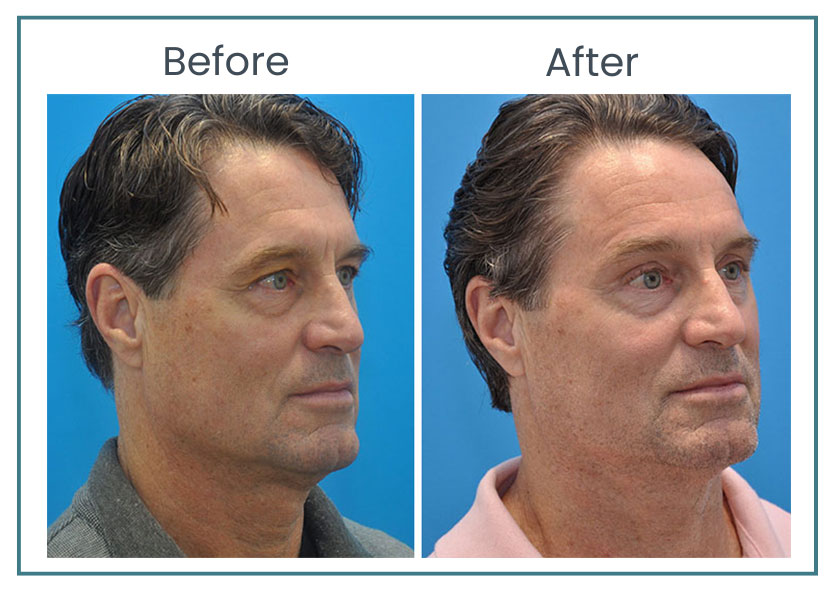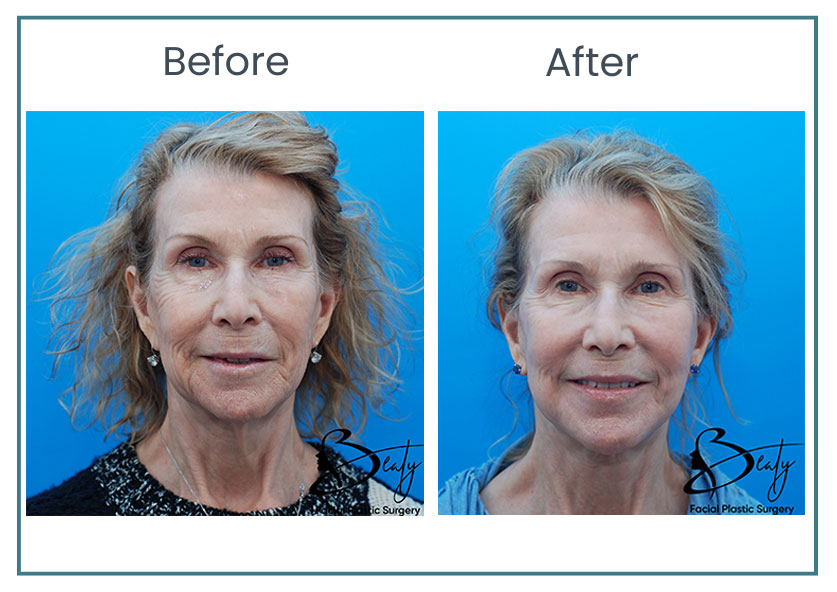Facial fat grafting offers a more natural way to restore lost volume, smooth wrinkles, and enhance facial contours using a patient’s own fat. This minimally invasive procedure transfers fat from other areas of the body to rejuvenate the face with long-lasting results. Because it uses the body’s own tissue, fat grafting provides a soft, natural appearance with a low risk of reaction. Ideal for those seeking subtle, youthful enhancement, fat transfer can improve facial fullness, symmetry, and overall skin quality.
What Is Facial Fat Transfer?
Facial fat grafting restores lost volume, smooths wrinkles, and enhances contours using a patient’s own fat. Fat is harvested from areas like the abdomen or thighs, purified, and carefully injected into the cheeks, temples, under-eye area, or jawline. This technique provides natural-looking, long-lasting results while improving skin quality. Since it uses the patient’s own tissue, there’s no risk of rejection, making it a safe and effective option for facial rejuvenation.
What Are the Benefits of Fat Grafting?
Fat grafting can be an excellent method for the long-term enhancement of facial volume. It is well recognized that loss of volume is a part of the aging process. Facial fat transfer can provide many benefits, including:
- Restoring Lost Volume – Helps replenish areas that have lost fullness due to aging or weight loss.
- Smoothing Wrinkles and Folds – Helps reduce the appearance of deep lines and creases.
- Natural-Looking Results – This technique uses the patient’s own fat to create a smooth, natural appearance.
- Long-Lasting Effects – Unlike fillers, results can be more permanent as transferred fat integrates with existing tissues.
- Dual Benefit of Liposuction – Removes unwanted fat from another area of the body.
- Minimal Risk of Allergic Reaction – Since it uses the patient’s own fat, there’s little to no risk of rejection or allergic response.
- Improves Skin Quality – Fat contains stem cells that may enhance skin texture and elasticity.
- Customized Contouring – Can be used to enhance specific facial features like cheeks, temples, and jawline.
- Less Maintenance Than Fillers – Reduces the need for frequent touch-ups compared to synthetic dermal fillers.
- Minimally Invasive – A less invasive alternative to facial implants.
- Complements Surgical Procedures — For patients seeking more comprehensive rejuvenation, fat transfer can be paired with other facial rejuvenation surgeries.
“WOW! 7 months ago I had a blepharoplasty- Lower - external, canthoplasty , facial fat graphing and ultherapy face procedure and I must say that at 60 I am Overwhelmed with how much more confidence it has given me to be in front of my audience. It all looks very natural, and Dr. Beaty and his team went overboard to make sure that I was confident and comfortable all the way through the journey. Would I do it again? YES! What took me so long? IDK! Dr Beauty And his staff are truly 5 Star, kind, considerate and professional! I would highly recommend him for any of your plastic surgery needs!"
Dr. Chris B
Who Is a Candidate for Facial Fat Transfer?
Ideal candidates for fat transfer are men and women who want to restore youthful facial contours without synthetic fillers or implants. Candidates typically:
- Have visible volume loss in the cheeks, under-eyes, or temples
- Want to soften deep wrinkles or folds
- Desire natural, long-lasting enhancement using their own fat
- Have adequate fat stores in donor areas such as the abdomen, thighs, or flanks
- Are in good overall health and do not smoke
- Have realistic expectations about the results
Patients with significant skin laxity or sagging may benefit from combining fat grafting with other facial rejuvenation procedures for optimal improvement.
How Is the Fat Grafting Procedure Performed?
The fat grafting procedure starts by harvesting fat from a donor site, usually the abdomen, thighs, or flanks. The fat is then specially processed under sterile conditions to remove fluid, oils and blood cells, leaving pure fat graft which can be made into micro- or nano-fat. This fat is then strategically injected into the desired facial areas using blunt cannulas, similar to injectable fillers but with natural, living tissue. An additional benefit of fat grafting is that the purified fat is rich in stem cells and growth factors, which can help to improve skin quality. Most patients can have fat grafting procedures done in the office under local anesthesia and some mild sedation.
What Is Recovery Like After Fat Injections?
Recovery after facial fat transfer is generally smooth and involves only minimal downtime. Most patients experience a few days of swelling and mild bruising, which gradually improves over the first week. Tenderness or fullness in the treated and donor areas is common but typically mild.
Patients can usually resume normal daily activities within several days, though it is best to avoid strenuous exercise for about one to two weeks to allow the transferred fat to settle properly. Sleeping with the head elevated and following all post-procedure instructions can help minimize swelling and promote optimal healing.
While initial swelling may temporarily affect the appearance of the treated areas, results become more apparent as the tissues heal and the transferred fat integrates, typically within two to three months. The short recovery period is well worth the long-term rejuvenation and natural, lasting outcome that fat grafting provides.
Fat Injections Before and After Photos


How Long Do Facial Fat Grafting Results Last?
Fat transfer to the face provides long-lasting results, with many patients experiencing improvement for years. While some of the transferred fat may be reabsorbed by the body in the first few months, modern techniques help over 85% of transferred fat survive and integrate with facial tissues. The fat that successfully integrates remains permanently.
The longevity of results depends on factors such as the patient’s metabolism, lifestyle, and aging process. Maintaining a stable weight can help preserve the outcome. Unlike temporary dermal fillers, fat grafting offers a natural, enduring solution for facial volume loss and contour enhancement. Touch-up treatments may be needed over time to maintain optimal results.
What Are the Risks of Fat Grafting?
Facial fat transfer is considered a safe, well-tolerated procedure, especially when performed by an experienced provider. However, as with any medical treatment, there are potential risks. Patients may experience temporary swelling, bruising, or numbness as the treated areas heal. Minor asymmetry or uneven volume retention can occur, and in some cases, small portions of the transferred fat may be reabsorbed by the body, requiring touch-up treatments to maintain optimal results. Though uncommon, there is also a rare risk of infection or cyst formation.
Choosing a qualified, experienced provider can help minimize these risks and ensure a natural, balanced outcome.
Complementary Procedures to Fat Injections
Fat grafting can beautifully enhance results when combined with other facial rejuvenation treatments. Common complementary procedures include:
- Facelift or Mini Facelift – To address sagging skin and redefine facial contours
- Eyelid Surgery (Blepharoplasty) – To rejuvenate the upper and lower eyelids
- Laser Skin Resurfacing – To smooth fine lines and improve skin tone
- Ultherapy® or RF Microneedling – To tighten and lift the skin non-surgically
- Dermal Fillers or BOTOX® Cosmetic – To fine-tune expression lines and subtle details
Combining procedures allows for comprehensive, natural-looking facial rejuvenation customized to each patient’s goals.






